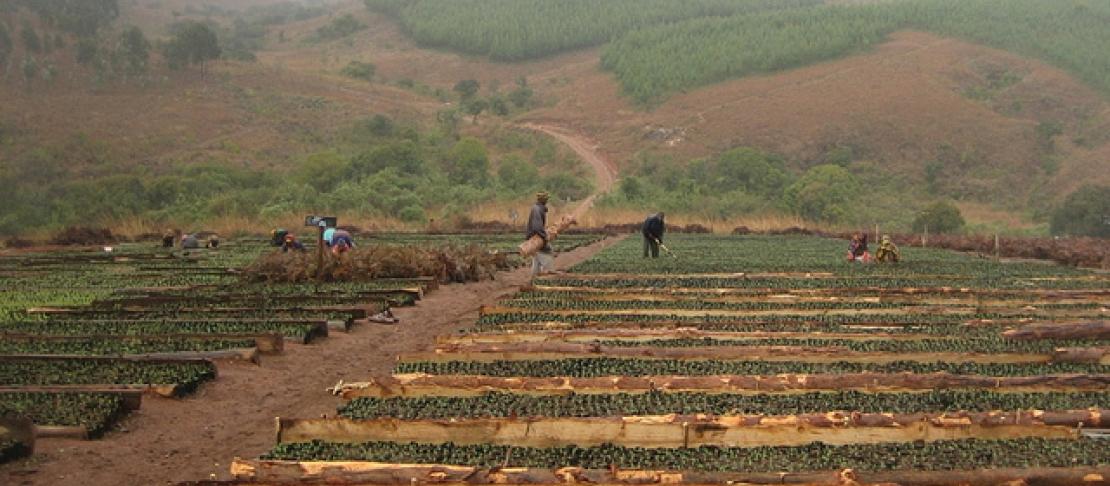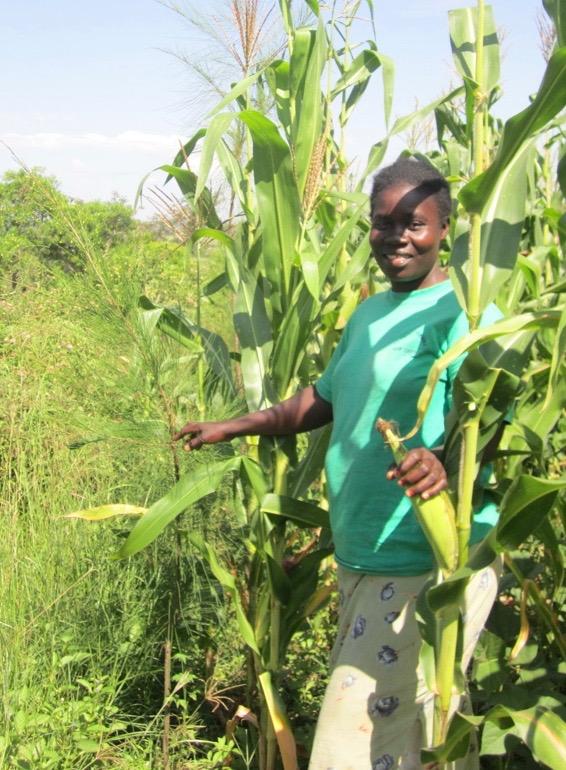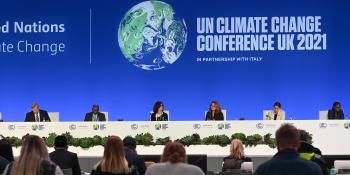Project developers key for linking smallholder farmers to global agricultural carbon markets

Project developers serve as necessary bridging organizations that ensure greenhouse gas mitigation and livelihood gains while managing the trade-offs between them.
The carbon market offers a unique way to use climate finance to fund activities that both reduce emissions and deliver livelihoods benefits to smallholder farmers. Specifically, smallholder agricultural carbon market projects encourage farmers’ implementation of sustainable agriculture land management practices that reduce greenhouse gas emissions and increase food security.
We analyzed eight East African agricultural carbon projects that spanned a diverse range of agricultural carbon market projects and varied in strategy and scale of implementation. For example, Green Resources Ltd. (GRL) has a long-term land lease from the Tanzanian government for reforestation. Smallholders are involved as employees to plant, maintain or monitor the trees. Very different from GRL, the Kenya Agricultural Carbon Project and the Trees for Global Benefits Project provide incentives to smallholder farmers to plant trees and adopt sustainable land management practices on individual farms or community woodlots.
Expanded role of project developer
While the importance of project developers as intermediaries in carbon market projects is well-established, project developers have not often been understood as bridging organizations with the ability to minimize the mismatches of scale.
We found that project developers, as bridging organizations, helped reduce mismatches of timing, payment, and knowledge between smallholder farmers and carbon credit buyers.
Understanding the tactics project developers employ, and the efficacy of them, offers insight into how to design and implement carbon market projects that meet both climate change mitigation and poverty alleviation objectives.
Challenges and solutions in smallholder agriculture carbon projects
Analysis showed a significant time-lag between agricultural changes such as on-farm tree plantation and the disbursement of carbon revenues that compensates for the agricultural changes, largely dependent on whether or not buyers and carbon verifications were required prior to paying farmers. In some projects, farmers were paid after they planted a tree, regardless of whether or not a buyer was found, while in other projects farmers were not paid until both a carbon credit buyer was found and the carbon credit was verified. Project developers addressed the timing gap by providing interim assistance, such as partial payments, to help farmers adopt or free technical assistance or tree seedlings.

The Kenya Agricultural Carbon Project works with smallholder farmers to implement sustainable agricultural land management practices. Research showed that the project developers were able to minimize the timing and payment mismatches by providing benefits that are outside the scope of the carbon market, such as extension services and increased crop productivity. Photo: J. Lee (CCAFS)
Another significant challenge related to scale is the carbon payment. Buyers are interested in obtaining the maximum benefit on a carbon credit for the lowest price possible, yet farmers are unlikely to adopt practices if the payment is not high enough to be profitable. Project developers primarily tried to address this issue by lowering their projects costs (e.g. devising more inexpensive monitoring systems such as farmer-based monitoring) or emphasizing the practices’ supplemental benefits such as increased crop productivity or fruit production.
Lastly, we found a significant knowledge gap due to the complexity of carbon markets and the knowledge that is required to participate.
Buyers (are) in a position of market power when participating in carbon projects. .... In contrast, the smallholder farmers tend to have limited knowledge of carbon markets. They often do not know when carbon payments will arrive or why carbon payment amounts differ. While terms of payment are stipulated in the contractual agreements made between farmers and carbon buyers, the language can be confusing and obtuse.” Lee et al. Bridging organizations in agricultural carbon markets and poverty alleviation: An analysis of pro-poor carbon market projects in East Africa.
Farmers expressed discontent when they were not paid as much as they thought they would be or when the carbon payments did not arrive on time. While project developers tried to bridge the knowledge gap by providing farmers with contracts, contracts were often only in English, and farmers had a difficult time understanding the terms of the contract and felt “wronged” or “tricked” (farmers’ words) when carbon payments did not arrive or were smaller than expected.
Strategies vary
Our results show that project developers addressed challenges in ways that reflected their development values. For example, project developers with a rural development mindset focused heavily on the non-carbon benefits, in contrast to more profit-driven developers that focused on wages and employment.
Results also suggest that communication and partnership with actors across different levels were key to devising effective strategies that minimized the mismatched expectations. Aligned goals of buyer and project developer, and availability of donor funds, further decreased the extent of mismatches. For example, because the Kenya Agricultural Carbon Project had a committed buyer interested in rural development and donor funds from the Swedish government, it could provide extension services that alleviated some of the time and payment mismatches, though the knowledge mismatches remained difficult to address.
Project developers play a powerful role in shaping pro-poor agriculture carbon markets and the extent to which they can achieve poverty alleviation and carbon sequestration objectives. There is much discussion and optimism surrounding using climate finance and agricultural carbon markets to connect improving smallholder farmers’ livelihoods while meeting broader climate change and agriculture goals. Our results suggest that bridging organizations are for now, and the foreseeable future, necessary for connecting smallholder farmers to the global carbon market, and thus to the success of smallholder agriculture carbon projects.
Read more
Download the article: Lee J, Ingalls M, Erickson JD, Wollenberg E. 2016. Bridging organizations in agricultural carbon markets and poverty alleviation: An analysis of pro-poor carbon market projects in East Africa. Global Environmental Change 39:98-107.
Shames S, Heiner K, Kapukha M, Kigali L, Masina M, Nantongo Kalunda P, Ssempala A, Recha J, Wekesa A. 2016. Building local institutional capacity to implement agricultural carbon projects: Participatory action research with Vi Agroforestry in Kenya and ECOTRUST in Uganda. Agriculture and Food Security.
Lee J, Martin A, Kristjanson P, Wollenberg E. 2015. Implications on equity in agricultural carbon market projects: a gendered analysis of access, decision making, and outcomes. Environment and Planning A 47:2080-2096.
Masiga M, Kalunda PN, Kiguli L, Ssempala A, Shames S, Heiner K, Miller M. 2014. Capacity Building for Stakeholders in Smallholder Agricultural Carbon Projects in Eastern Africa. Training Manual. Washington, DC: EcoAgriculture Partners
Lee J. 2012. Smallholder agricultural carbon projects in Ghana: Benefits, barriers, and institutional arrangements. CCAFS Working Paper no. 30. Copenhagen, Denmark: CGIAR Research Program on Climate Change, Agriculture and Food Security (CCAFS).
Jean Lee is Assistant Professor in the Environmental Program at Colorado College. She earned her PhD from the Gund Institute for Ecological Economics at the University of Vermont, where she conducted research on low emissions agriculture with the CGIAR Research Program on Climate Change, Agriculture and Food Security (CCAFS).
Julianna White, program manager for CCAFS low emissions agriculture research, edited this blog.



